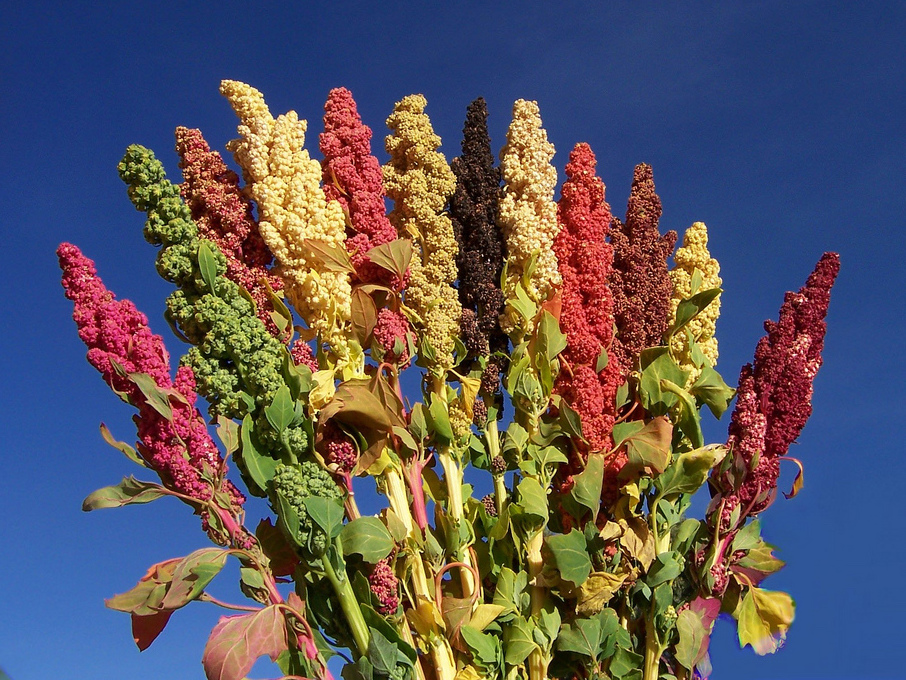
Finding quinoa’s sweet spot to feed the world

Sequencing the quinoa genome has created the opportunity to make it not just a superfood, but a sustainable super crop
Published 19 February 2017
For a drought resistant crop that can thrive on marginal land, quinoa seeds still need plenty of water to make them sweet enough to eat. It is one of the reasons why, despite being a nutritional superfood, it hasn’t been a solution for feeding our increasingly populous world. Until now.
Birds bypass quinoa fields because the seeds taste awful. That is because chemicals called saponins in the coating of the seeds gives them a bitter taste. Once harvested, quinoa has to be heated to crack the seed coating and then repeatedly washed. This process potentially also washes away some of the nutrients.
But scientists have now for the first time sequenced the entire quinoa genome and as a result discovered the genes that appear to drive the production of saponins. It means scientists have the opportunity to use breeding approaches to manipulate the control of saponin production to eventually grow quinoa with less bitter-tasting compounds.
“Saponin protects quinoa from birds, but making the crop edible uses a lot of energy and water. The sequencing of the genome has now provided a pathway forward to try and address this problem,” says Professor Ute Roessner from Metabolomics Australia and the School of BioSciences at the University of Melbourne.
Professor Roessner was part of the international team, led by Professor Mark Tester from the King Abdullah University of Science and Technology (KAUST) in Saudi Arabia, that has sequenced Chenopodium quinoa.
The results, published in Nature, will allow scientists to identify genes that can be targeted through traditional breeding for improved growth and quality.
Not only is making quinoa sweeter high on the agenda, the team also wants to learn how to control the size of quinoa to produce shorter, stockier plants that are less likely to fall over. More stable plants could support bigger seed heads and be grown closer together in large fields, increasing productivity.
Never bred for mass production
Although its popularity is largely limited to ‘foodies’ in the West, with a mandate to be topped with Persian feta, quinoa began as the ‘Mother’ crop that fuelled the ancient Andean civilisations for more than 7,000 years. But quinoa was marginalised when the Spanish arrived in South America and as a result it has never been bred for mass production despite its high nutritional value.
“It is called a ‘superfood’ because unlike grains such as wheat, quinoa is high in protein with a balanced essential amino acid content. It is also gluten free and has a low glycaemic index which means it releases energy slowly,” says Professor Roessner.
“These qualities make it an excellent source of nutrition for the whole population, including those with coeliac disease and people at risk of developing diabetes, obesity or cardiac diseases.”
But it is also the crop’s hardiness that makes it an attractive staple.
“Quinoa could hold the key to feeding the world’s growing population because it can thrive in harsh environments and grows well on poor quality, marginal lands which we have a lot of in Australia,” Professor Roessner says.
Locating saponins
“In Australia in 2001, over 5.7 million hectares of mostly agricultural land was affected by high salt, known as salinity. Predictions indicate that if effective solutions are not implemented, the area affected could increase to 17 million hectares by 2050.

“Quinoa could provide a healthy, nutritious food source for the world by using land and water that currently cannot be used for any other crop. This would therefore provide a boost to the agricultural industries and improve food security.”
Professor Roessner and her University of Melbourne colleague on the team, Dr Berin Boughton, are specialists in metabolomics – the study of the chemical products of metabolism – and were brought into the sequencing effort to help determine the function of some of the genes.
“The sequencing project identified some genes that looked likely to control saponin production,” says Dr Boughton. “We used some of the latest mass spectrometry imaging techniques to locate the products of the genes within the seeds. We can now see how and where this saponin production occurs.
“This will be an important approach to monitor future efforts of breeding varieties with decreased saponin levels,” he says.
“We hope this information will provide breeders with genetic markers to guide traditional breeding. This would fast-track breeding a sweeter and more productive quinoa, that still has the ability to grow on poor, salty soils.
“The results would truly be a superfood.”
Metabolomics Australia is an initiative of the National Collaborative Research Infrastructure Strategy under Bioplatforms Australia Pty Ltd.
Banner Image: Bioversity International/Flickr

